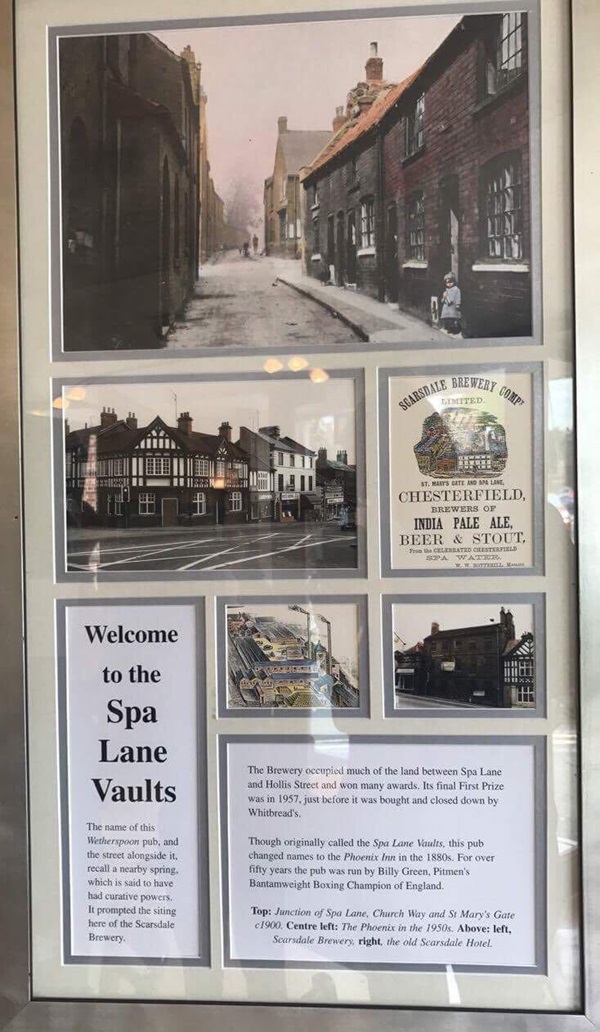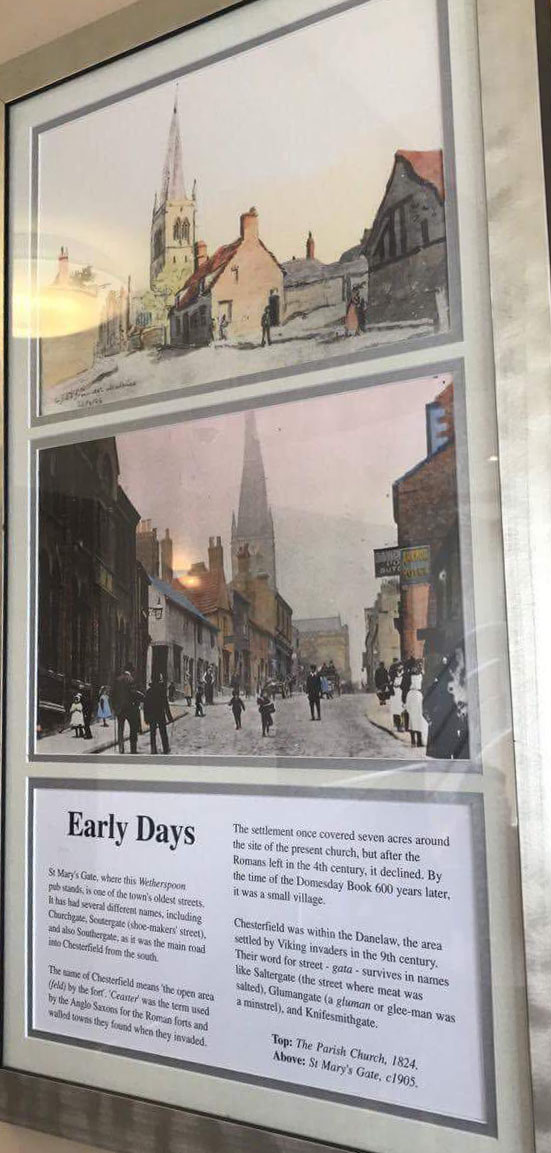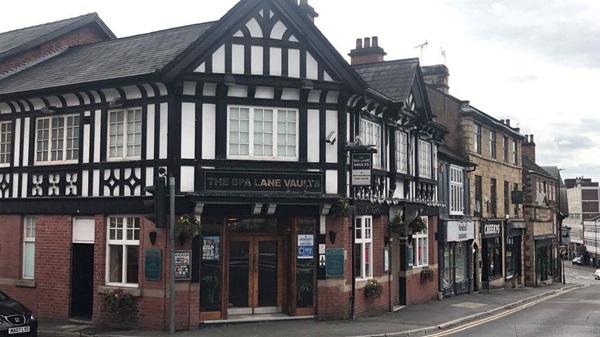34 St Mary’s Gate, Chesterfield, Derbyshire, S41 7TH
The Spa Lane Vaults is the name of the original pub on this site. This was changed to the Phoenix in the 1880s. The pub was rebuilt in the 1920s.
Photographs, an illustration and text about The Spa Lane Vaults.

The text reads: The name of this Wetherspoon pub, and the street alongside it, recall a nearby spring, which is said to have had curative powers. It prompted the siting here of the Scarsdale Brewery.
The brewery occupied much of the land between Spa Lane and Hollis Street and won many awards. Its final first prize was in 1957, just before it was bought, and closed down by Whitbread’s.
Though originally called the Spa Lane Vaults, this pub changed names to the Phoenix Inn in the 1880s. For over fifty years the pub was run by Billy Green, Pitmen’s Bantamweight Boxing Champion of England.
Top: Junction of Spa Lane, Church Way and St Mary’s Gate c1900
Centre left: The Phoenix in the 1950s
Above: left, Scarsdale Brewery
Above: right, the old Scarsdale Hotel.
Prints and text about the early days of Chesterfield.

The text reads: St Mary’s Gate, where this Wetherspoon pub stands, is one of the town’s oldest streets. It has had several different names, including Churchgate, Soutergate (shoe-makers’ street), and also Southergate, as it was the main road into Chesterfield from the south.
The name of Chesterfield means ‘the open area (feld) by the fort’. ‘Ceaster’ was the term used by the Anglo Saxons for the Roman forts and walled towns they found when they invaded.
The settlement once covered seven acres around the site of the present church, but after the Romans left in the 4th century, it declined. By the time of the Domesday Book 600 years later, it was a small village.
Chesterfield was within the Danelaw, the area settled by Viking invaders in the 9th century. Their word for street – gata – survives in names like Saltergate (the street where meat was salted), Glumangate (a gluman or glee-man was a minstrel), and Knifesmithgate.
Top: The Parish Church, 1824
Above: St Mary’s Gate, c1905.
External photograph of the building – main entrance.

If you have information on the history of this pub, then we’d like you to share it with us. Please e-mail all information to: pubhistories@jdwetherspoon.co.uk